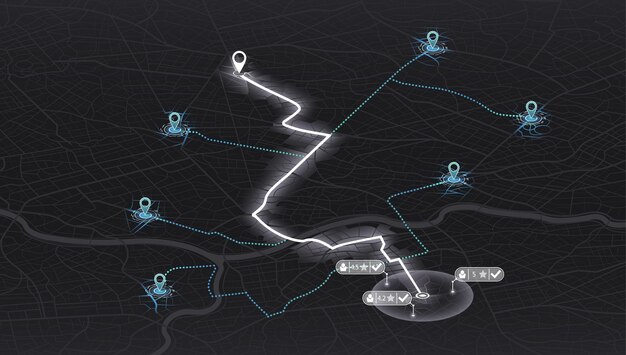What purpose do Static Routes Serve Split Horizon? Guide
In this deep dive into the world of networking, we will be exploring static routes used for split horizon, what they are for and how they solve major networking problems. Are you ever bewildered when you see routing inefficiencies or network loop issues? If so, then this article will answer your question and solve your problem.
Admin
11/23/20244 min read


A little about the Split Horizon Issue
Routing is important because without routing data, that data cannot find itself to the next device in a computer network. A particular routing challenge presents itself in the split horizon rule. Distance vector routing protocol has feature known as split horizon, in order to prevent routing loops. So why does the loop exist and what is wrong with them?
Think of a message which bounces without limit between your friends, each of them, thinking this message should be passed on to somebody else. However, in networks, this loop wastes the bandwidth and leads to an inefficient network. So, split horizon makes a router not advertise routes back the way it learned them. Split horizon can however cause unreachability issues in topologies of more complexity, such as hub and spoke configurations. In all these scenarios split horizon can prevent legitimate routes from being advertised in the correct manner.
Here lies the core problem: What are the best ways of preventing routing loops without loss of network accessibility and efficiency?
So what frustrates us about poor routing configurations?
Not without the right configurations, networks may suffer unnecessary downtime, packet loss and slower performance. For example:
Inefficient Traffic Flow: Indirect, longer paths for data may help a poorly configured network.
Looping Packets: Choking bandwidth, crashing parts of the network, uncontrolled loops can happen.
Complex Troubleshooting: Finding the origin of split horizon related troubles is generally a lengthy and aggravating process.
Does this sound familiar? You are not alone. Most network administrators and IT professionals face the difficulties of balancing the pros and cons of split horizon. Luckily, we can eliminate these frustrations using static routes.
A Role for Static Routes
So then what do static routes have to do with split horizon? Static routes are a manual way of overriding the split horizon caused limitations. A static route is a routing entry set manually and not dynamic. It’s kind of like saying you‘re setting up a direct shortcut between two places, eliminating the usual process of having to pass through some intermediary obstacles or automated processes.
Static routes are particularly useful in scenarios where:
Split horizon keeps routing information from being propagated that it should be.
Efficiency requires specific paths.
Narrative control over traffic flow is required but customized.
At first static routes may sound intimidating, but trust me early implementation is simple and extremely efficient.
In this post, we configure Static Routes to handle Split Horizon
Now let’s break this down into actionable steps to configure static routes so you can successfully eliminate split horizon problems.
Know Your Network Topology
Dive into configurations only after you’ve spent some time studying your network layout. Common scenarios where split horizon issues arise include:
Hub-and-Spoke Networks: These networks consist of multi branch routers which are connected to the central hub router.
Redundant Links: A network consisting of multiple paths between devices becomes subject to loops when split horizon is disabled.
To where they may need static routes, map out the connections between devices.
Locate Routes Blocked by Split Horizon
Run diagnostics to discover which routes are being suppressed and by what because of the split horizon. You can accomplish this by running the routing table where missing routes can be traced to the origin. Luckily most modern routers offer something like show ip route or tracepath to help you with this.
For example:
Make sure that hub router has proper routes to each spoke and vice versa in hub and spoke setup.
So look for missing routes that should be there but aren’t allowed by split horizon restrictions.
Configure Static Routes
After you've found the affected routes, you need to static entries to defeat these limitations. For static routes you can configure it using your router's command-line interface (CLI).
Verify the Configuration
After playing around with the static routes, verify it’s solved the problem. Now use commands such as ping and show ip route where we can make sure static routes are being displayed and are active.
Furthermore, keep track of the traffic flow to make sure it flows as it's supposed to.
Monitor and Maintain
Because static routes are statically defined, they must be periodically checked that they’re still valid as the network changes. Keep documenting your configurations and keep them updated. Make those sorts of changes if new devices are added or if topologies change.
Why Static Routes are Important
Static routes might seem like an old school solution in the era of dynamic protocols but by virtue of their simplicity and dependability, they are just the tool to get your hands on the likes of split horizon. They’re not always the first thing you reach for – think of them as a Swiss Army knife in your networking toolset – but they’re gold when they come full steam ahead.
Static routes for split horizon are a must know for network administrators because they give you control, flexibility, and peace of mind.
Conclusion
What are static routes used for summary split horizon? There are a practical way of overcoming routing issues resulting from the split horizon rule. Static routes which are manually configured to allow for the creation of direct paths, guarantee that simple traffic reaches its destination without becoming unaccessible or getting stuck in loops. It takes the good and the bad of split horizon and brings them to a reasonable balance for complex topologies.
After all, if you know your network, know the problem areas, know which static routes to apply, success is easy. Start small, validate your configuration and go from there.
Split horizon complexities are not an excuse—take charge of your network today, with static routes!


Frequently asked questions(FAQs)
Why does the split horizon rule exist?
Routing loops are prevented by the split horizon rule that states that if a route is learned, then route information about this route should not be transmitted back in the direction it was learned.
How do static routes prevent split horizon?
Static routes override split horizon restrictions by actually defining a route for the traffic, making blocked routes available once torn back down.
Which are better, static routes or dynamic routing protocols?
Static routes are not better, just another use case. They are great for small networks or for 'split horizon' circumstances of very precise control.
Can you disable split horizon rather than using static routes?
In some cases split horizon can be disabled, but this brings the danger of routing loops. It is often safer and controlled to use static routes.
Recommended for you
Technetify is your go-to destination for the latest insights and trends in technology. Our blog offers a diverse range of articles that cater to tech enthusiasts, professionals, and casual readers alike.
Follow Us
Engage
© 2024. All rights reserved Technetify.com
Guest post

